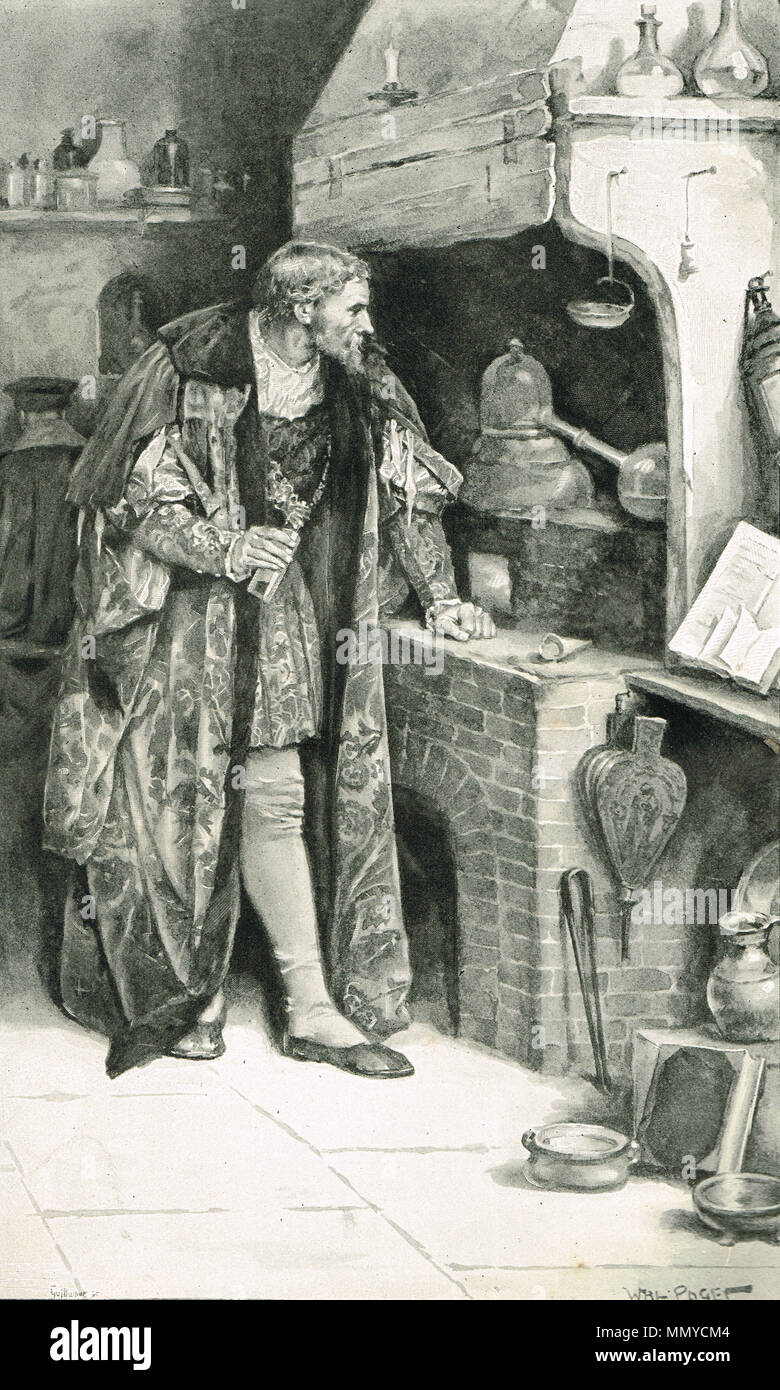James IV, King of Scotland, in his Alchemy laboratory at Stirling Castle, Scotland, searching for the Grand Magisterium of the Philosopher's Stone.

Image details
Contributor:
Historical Images Archive / Alamy Stock PhotoImage ID:
MMYCM4File size:
33.1 MB (3.7 MB Compressed download)Releases:
Model - no | Property - noDo I need a release?Dimensions:
2635 x 4387 px | 22.3 x 37.1 cm | 8.8 x 14.6 inches | 300dpiDate taken:
1893More information:
This image could have imperfections as it’s either historical or reportage.
Illustration by Walter Paget (1863-1935) from a history of the Scottish People published in 1893. Info from wiki: James was especially interested in surgery and medicine, and also other sciences which are now less creditable: in Stirling Castle, he established an alchemy workshop where alchemist John Damian looked for ways to turn base metals into gold.[12] The project consumed quantities of mercury, golden litharge, and tin.[13] Damian also researched aviation and undertook a failed experiment to fly from the battlements of Stirling Castle, an event which William Dunbar satirised in two separate poems. James IV (17 March 1473 – 9 September 1513) was the King of Scotland from 11 June 1488 to his death. He assumed the throne following the death of his father, King James III, (1451/52–1488, reigned 1460–1488) in the Battle of Sauchieburn, a rebellion in which the younger James played an indirect role. He is generally regarded as the most successful of the Stewart monarchs of Scotland, but his reign ended in a disastrous defeat at the Battle of Flodden, where he became the last monarch not only from Scotland, but from all of Great Britain, to be killed in battle.